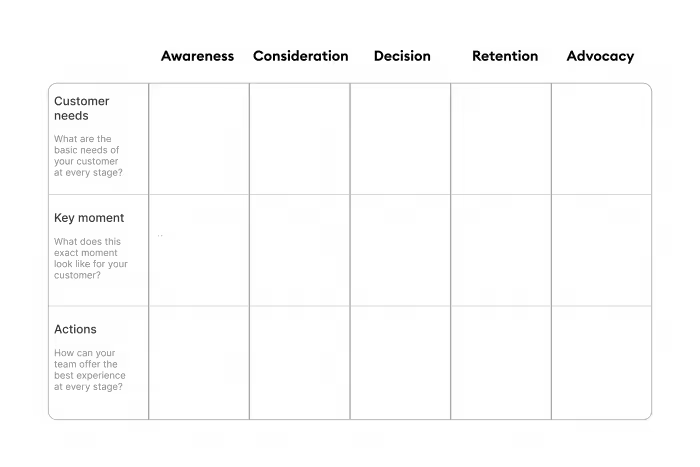Times are changing. If consumers wanted to buy a T-shirt in 1980, they'd visit one of their local clothing stores. In 2022, they simply hit the web and find millions of webshops selling the most beautiful T-shirts with the click of a button. And that means consumers get to be picky. They now have the power over the sellers.
With competition being more fierce than ever, businesses have to work hard to find customers, let alone keeping them. A good product, a good price, or simply being the only store in town just doesn’t do the trick anymore.
It's how your customers feel about your brand after completing the entire buyer's journey that determines if they decide to return or not. In this day and age, customer experience is the biggest driver of customer loyalty.
“We see our customers as invited guests to a party. And we are the hosts. It’s our job every day to make every important aspect of the customer experience a little bit better.” - Jeff Bezos
The customer experience consists of so many different stages, channels, tools, and stakeholders, that it’s difficult to determine how to improve it. Where do you even start? But with this checklist, you can take the first steps to turn one-time customers into raving fans.
Customer experience vs customer service
It's important to differentiate between the terms customer experience and customer service, since both are often used interchangeably. Even though both aim to make customers happy, they're not the same.
Customer service is about providing care for your customers, either online or in a store. Customer experience is much broader, encompassing customer service, product design, logistics, marketing, and anything else that influences the buyer's journey.
That means that customer service is only a part of CX, although it's definitely an essential one.

Listen to your customers
First things first. If you want to deliver on an experience that your customers will appreciate, you need to understand them deeply. And one of the biggest misconceptions is that it's possible to understand your customer without regular direct contact. Any decision that you make based solely on gut feeling or your own taste is not customer-centric.
This means that every team that influences a part of the buyer's journey should incorporate tactics to listen. You can do this by gathering qualitative feedback with a customer satisfaction survey, monitoring the content of customer service tickets, or simply setting up regular chats with your customers.
Customer journey mapping
Before you can facilitate good experiences, you have to know what the entire customer journey looks like in detail. Too often, businesses focus on a couple of touchpoints (like branding and customer service) but forget about others. By mapping the customer journey, you create a helicopter view for the entire business — making it impossible to skip a beat.
You can map out the buyer's journey by filling in a customer journey canvas. A customer journey canvas gives you an overview of your customer’s needs during five stages: awareness, consideration, decision, retention, and advocacy.
This will give you the following insights:
- Customer needs: what are the needs of your customer at every touchpoint?
- Key moment: what does this specific moment look like for your customer? You can visualize this with pictures or screenshots.
- Actions: how can your team offer the best experience at each and every stage?

Channel management
Now that you have mapped out your customer journey, you understand via which channels you get in touch with customers. The goal is to make the experience on all of those channels feel one and the same while understanding their specific role in the journey. No matter if it's your website, your store, the live chat on your website, or your Facebook page. Because customers don't think in channels, they just want to reach their own personal goals.
With all your channels spread out over different software, it can be difficult to create a seamless experience. For instance, customer service teams often manage multiple communication channels. From email and live chat to WhatsApp, Facebook Messenger, and Instagram Messaging. On the other hand, they also have to access their stock management software, their webshop software, and more. That's a lot of clicking back and forth, leaving little time to connect with customers.
That's why it's essential to centralize your customer-facing channels as much as possible. Customer service teams, for instance, should connect all their communication channels to one platform.
Learn how Nubikk creates a clear overview of all their customer conversations
Cross-functional collaboration
Creating an experience that is high-level across the entire journey is challenging. This is often amplified by the fact that different parts of the journey are the responsibility of different teams. If a marketer has set up an amazing campaign that brings in a customer, the service provided by the support team should be just as good.
This is where cross-functional collaboration comes in, where you break down the borders between teams and constantly align on the complete experience of the customer.
There are multiple ways to commit to this type of collaboration. As a first step, you can set up a customer experience team, with team members from every single customer-facing department. In regular meetings and projects, they can ensure the entire business becomes and/or stays customer-centric.
Communicate your efforts
Now that you're on the right track to improve the customer experience, you should also communicate your efforts to your customers. Because just listening isn't enough — it's about action.
The way you do this is going to be different for every team, but it eventually all comes down to transparency. For instance, customer service will have to fill in the customer on their entire process: "You told me that your order hasn't been delivered yet, I am going to contact my colleague for a status update and will get back to you via email before 2 PM." In marketing, it could be a regular newsletter: "Many of you asked us for product X, that's why we decided to start producing it. Order now."
In the end, it's all about what your customer experiences — not about what you are **doing to make them happy. By communicating clearly, you get to mold their experience.
Measure the experience
To measure is to know, but measuring the entire customer experience can feel like a daunting task. It's advised to measure the customer journey in three steps: the journey as a whole, different phases of the journey, and individual touchpoints.
The journey as a whole can be measured with metrics like NPS (Net Promoter Score) or CSAT (Customer Satisfaction). NPS measures how likely it is that a customer will recommend you to people they know. CSAT tracks how happy your customers are with their experience.
When measuring specific phases of the journey, it's important to keep the primary goal of each phase in mind. Here are some examples of metrics you can use for each stage:
- Awareness: number of visits, time on page
- Consideration: branded search traffic, direct traffic
- Purchase: Abandoned basket rates, sales conversion rate
- Retention: return visitors, number of conversations, customer lifetime value
- Advocacy: Net promoter score, customer satisfaction
Make sure that everybody within the company has access to these metrics and regularly update them on the context. Because at the end of the day, numbers are just numbers. A good place to start is to create a CX dashboard.

How to implement a customer experience strategy
To create a meaningful customer experience strategy, you have to deeply understand your customer's journey, cultivate customer-centric thinking, and measure the right things.
You can start off by filling in your own customer journey canvas.
Read more about customer experience:




.png)











